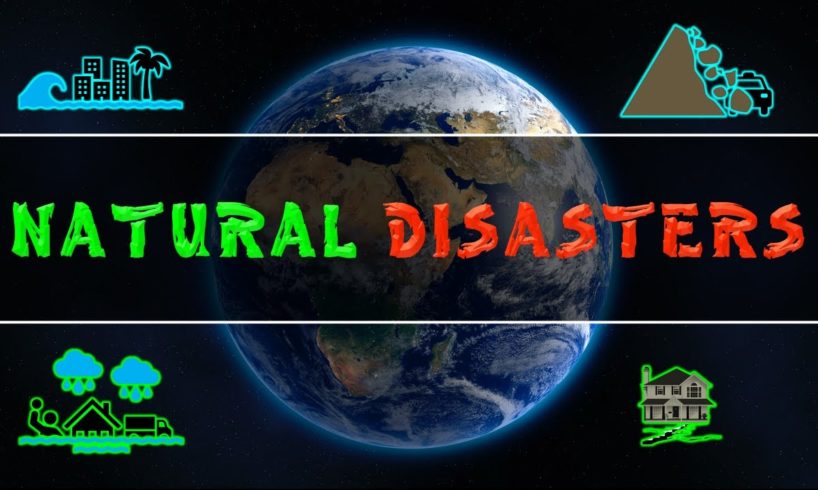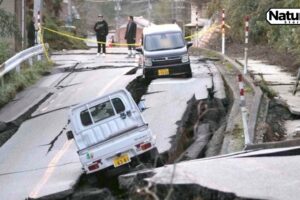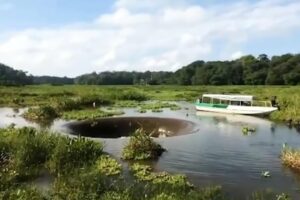
A natural disaster is a major adverse event caused by the natural processes of the Earth, consisting of floods, hurricanes, tornadoes, volcanic eruptions, earthquakes, tsunamis and other geologic processes. A natural disaster causes loss of life or property damage, and leaves some economic damage afterwards costing millions.
And often human activities also make causes of natural disasters, such as climate change and deforestation.
It is the damage to humans and their property which counts most. Therefore, one can say: “disasters occur when hazards meet vulnerability”. If a strong earthquake happens in uninhabited areas, it is usually not seen as a disaster or a loss.
An adverse event will not rise to the level of a disaster if it occurs in an area without vulnerable population. In a vulnerable area, however, such as Nepal during the 2015 earthquake, an earthquake can have disastrous consequences and leave lasting damage, which can require years to repair.
Examples
Hurricane, Typhoons & Cyclones
By definition, a natural disaster is an event that is caused by the natural forces of the earth and results in great damage and possibly loss of life. Each year, the earth experiences natural disasters. When natural disasters occur in heavily populated areas, a lot of people may lose their lives. A recent example is the Italian earthquake of 2016, where over 200 people died. The deadliest of all earthquakes happened in 1556 in China, where approximately 830,000 people lost their lives.
Let’s now take a look at the different types of natural disasters that can happen.
Earthquakes
We’ll begin with earthquakes. An earthquake occurs when the earth releases pent-up energy and causes the ground to shake. Earth’s ground is made up of several very large pieces of land called tectonic plates. Most earthquakes occur when these plates rub against each other in some way. These same plates also create mountains when they push against each other. As the mountains are formed, earthquakes may be felt. Sometimes, people cause earthquakes when they do mine blasts or nuclear tests.
Hurricanes, Typhoons, and Cyclones
Hurricanes, typhoons, and cyclones refer to the same weather phenomenon, where a really large storm swirls in circles. You’ll see the cloud of the storm turning in a spiral, touch down on the ground, and then reach toward the sky. When a storm reaches a wind speed of over 74 miles per hour, it gets classified as a hurricane, typhoon, or cyclone depending on where the storm is located. The storm is called a hurricane if it happens in the Atlantic and northern Pacific. If the storm occurs in the north-western part of the Pacific, then it is called a typhoon. In the southwestern Pacific and the Indian Ocean, the same type of storm is called a cyclone.
Tsunamis
A tsunami consists of huge waves caused by either an underwater earthquake or volcanic eruption. In Japanese, the word means ‘harbor wave.’ These waves can get as high as 100 feet and aren’t the gentle waves that you surf on. No, these are destructive waves that can knock down buildings, trees, and anything else in their path.
Floods
A flood is an overflow of water that covers the earth. This overflow can damage buildings and cars in its path. In a severe flood, the water can seep into houses and completely cover them, ruining everything. And, if people get caught up in the flood, they can be washed away with the flood and drown.
Mudslides
Mudslides occur when the ground gets so wet that whatever dirt is on the ground turns into a liquid mass and flows, like a flood, rapidly down a steep slope. When people or animals get caught up in the mudslide, it becomes very difficult to get out, as the mud drags them down. If not rescued, they may die.
Avalanches
An avalanche is when you have a bunch of snow, ice, or rocks falling rapidly down a slope, usually a mountainside. You might have seen movies where someone is standing next to a mountain with a bunch of snow on top. He or she yells out something and then you see all the snow tumble down the slope toward him or her. That’s an avalanche. Avalanches can bury people and animals alive.
source







I am youtube writer
Ayudenme con cinco ideas principales de la presentación porfis 😭
Excellent video!!! Congrats!
Thank you
Gracias Roger
Séptima ves que veo esta vara
Hola Liceo Los Ángeles
hola Liceo Bijagua zzz
This is educational
nice video